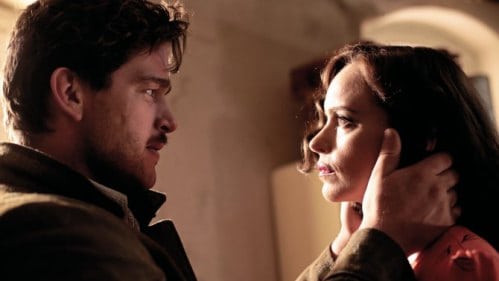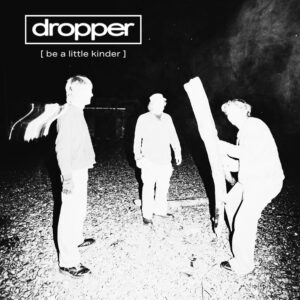Phoenix Rising (Interview)
Award-winning German film director Christian Petzold offers up his latest drama at this year’s New Zealand International Film Festival. Phoenix has all the ingredients of a classic film noir/Hitchcock-ian thriller. Set in immediate post-WWII Germany, Phoenix tells the story of a disfigured holocaust survivor, Nelly, played by Nina Hoss, who, after reconstructive surgery that leaves her unrecognizable, seeks out her husband who may or may not have betrayed her to the Nazis. Both Hoss and Ronald Zehrfeld, who plays Johnny, the shady husband, worked with Petzold on his previous feature, 2012’s Barbara, which was nominated for an Academy Award. Hoss, in particular turns in a stunning performance playing a truely multi-layered character. Petzold uses the music of Kurt Weill to set the mood and move the plot along. The 13th Floor’s Marty Duda spoke to Christian Petzold about making Phoenix and how he was able to coax such a complex performance from his favourite actress.
Click here to listen to the interview with Christian Petzold:
Or read a transcription of the interview here:
MD: The first thing that comes to my mind is the incredible performance that Nina Hoss put on the screen there and it’s very much what I would call multi-layered because she’s playing all these versions of this character. I’m wondering how you and her worked together to get that performance.
CP: Yeah. We have talked about the script, I think 2 years. During we have made Barbara I thought that now it’s great not to do this period picture of Phoenix which I haven’t… I was a little bit frightened to realise that I have this script since 10 years and then I saw her performance in Barbara together with Ronald Zehrfeld and I saw a love couple there. They don’t kiss there in the movie but a love affair starts, you can see that. Then I have this idea to make, the other way around, to show from the love couple which where the love is destroyed. And I talked with her about that and we talked since 2 years before shooting we talked about the script, about the character. Nina wasn’t, it’s more collaboration than just normal thing between director and blonde actress.
MD: Right. Okay.
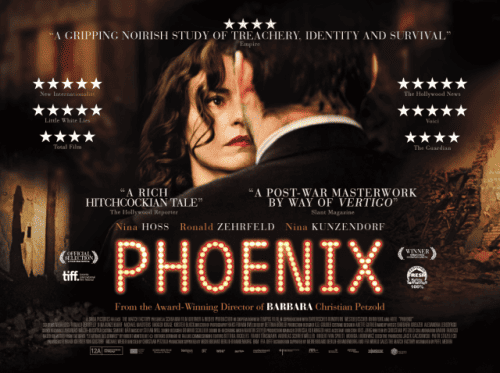 CP: I’m a little bit like Johnny, I lost her during the work. She’s getting independent I must say.
CP: I’m a little bit like Johnny, I lost her during the work. She’s getting independent I must say.
MD: Oh okay. That must be a concern, you don’t want to lose an actress like that I guess.
CP: It’s great because I’m in this basement where Johnny’s apartment, his flat. It was a very small room and so I have to use, for the first time in my life I have to use a monitor, a display and I’m sitting there and on the display like a director, a real director, with a megaphone and walkie-talkies and authority.
MD: Right.
CP: And I saw a man, Johnny, the character of Johnny, who loved the control about the model he’s creating.
MD: Right.
CP: At this moment I think about myself, I also love the control about my creation and it was a very relief situation for me, I must say, it was great.
MD: So it’s kind of life imitating art kind of imitating life again.
CP: Yeah that’s right.
MD: Which is pretty much what’s happening in the film as well. It’s very complicated. Were you concerned about making Johnny too unsympathetic a character, was that an issue in the film?
CP: Yes. I think for me it’s also a portray about Johnny because I am more in Johnny as a German.
MD: Right.
CP: As in Nelly because I always thought about what happened after ‘45 in German. They have seen everything but they don’t recognise it.
MD: Yeah.
CP: They are living one mile away from the concentration camp, but directors like Sam Fuller had to put them into the concentration camp after 45 as Sam Fuller, as American GI?
MD: Yeah.
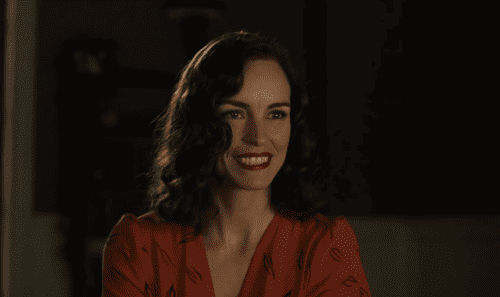
CP: And said, ‘Didn’t you notice that, why you don’t do anything?’ And this German thing, I don’t know the physiologic word for, to close your guiltiness away from yourself, I don’t know the word. In German I know everything, in English…i have to, I must say I have to change the rules because my daughter’s speaking English very well, when she hears me she starts laughing and this is a really embarrassing moment for me.
MD: You’re doing fine.
CP: She has lived there, half a year in Boston. She’s always looking the movies in original version, I have to use subtitles.
MD: Right, right.
CP: So this Johnny guy, this Johnny character, I think you can see that the, his body recognised her.
MD: Yeah.
CP: His senses recognised her but his brain, I must say, or his soul can’t recognise her anymore because of the guiltiness.
MD: He is in denial.
CP: Yeah that’s right.
MD: It’s interesting because I’ve just seen a documentary called Prophet’s Prey which is about a group of religious, a religious cult in The United States that believes in this one guy and it made me think that people will believe whatever they want to believe or what they need to believe and that has a lot to do with what’s happening in your film I think as well.
CP: Yeah that’s right. I always think about those people who are living in the tunnels who have a look to the world which is very small.
MD: Yeah.
CP: And everything is in order for them.
MD: Yeah.
CP: So they can live on because I’ve made two crime movies and I’ve talked with people in prisons. After I think 2 or 3 years in prisons they have made a story for the guiltiness that they’re innocent.
MD: Right.
CP: They believe it.
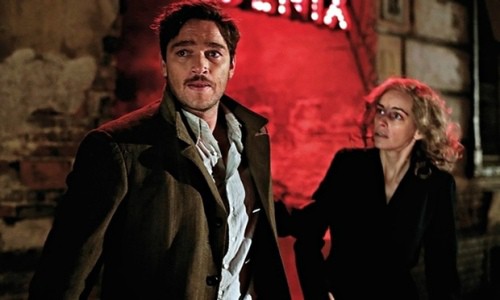
MD: And I thought it was really interesting in the beginning of the film, the first scene, where the American solider is insisting, demanding on seeing Nelly’s face, that you didn’t kind of go for the obvious opportunity to show off special effects. I mean in most modern films that would have been a very dramatic scene with kind of grotesque make up and all that, and your response, your way of presenting that was completely the opposite.
CP: Yeah, that’s right. The producers always said to me, ‘We have money this time, we can take fantastic masks from… we can take someone from Los Angeles who’s very great and fantastic and famous and stuff.’Bbut I think that, I want to show the reaction of people, so that you can imagine the face.
MD: Yeah.
CP: But I don’t want this obscene thing of, to show wounds and blood and such things.
MD: and then the soldier’s reaction was very muted as well but more powerful because of it, I guess.
CP: Yeah that’s right. I think also that both women in the car, they are astonished about this reaction because all soldiers they have seen in the last 6 years.
MD: Right.
CP: They are hard, brutal and they want to hurt the people. This soldier’s the first one who said sorry.
MD: Yeah, yeah.
CP: I think this opens the street for them for a moment.
MD: And the other scene that struck me early in the film was the first time you showed the night club, the Phoenix itself and there was this kind of strange red glow coming from it, from behind her and I was wondering what why you shot it like that?
CP: You know, 1945 and six weeks after the war there were 1000 cabaret clubs in Berlin. Something’s missing for more than twelve years, you know, Cabaret and all these movies.
MD: Yeah.
CP: All these clubs and the Weimar Republic.
MD: Yeah.
CP: And Berlin was the centre of Cabarets and shows, yeah. And this is coming back out of the ground and also the red light is coming back. There was no red light.
MD: Oh I see.
CP: So she’s coming back as if she was in a time machine.
CP: And the song on the stage, one of the songs is by Kurt Weill, Berlin Im Licht, that means “the light from Berlin”. He composed it 1932 it was an advertisement jingle he creates… you know so many artists have to make advertisement also in the 30s.
MD: Right, so that was his. That’s great.
CP: Light from Berlin was the subject of this song is so that all the people who created the light from Berlin, they’re refugees during the fascism and they have to go to Los Angeles and they create there the film noir…Fritz Lang, Otto Preminger…with the camera man and the light craft people. I think that this light is coming back to Berlin. That’s why I’ve made this scene.
MD: Oh okay. Speaking of songs you use the song Speak Low very effectively in the film. Why did you choose that song? How did you come across it?
CP: It was so that this composer Kurt Weill, he was a collaborator of Bertolt Brecht.
MD: Right.
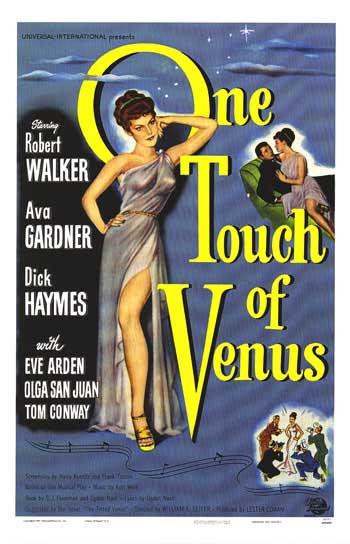 CP: He created a musical in the USA, the name of the musical I think was Venus in Arms (actually One Touch Of Venus). There is a movie was based on this musical with Ava Gardner.
CP: He created a musical in the USA, the name of the musical I think was Venus in Arms (actually One Touch Of Venus). There is a movie was based on this musical with Ava Gardner.
MD: Okay.
CP: It’s a little bit the same story. It’s about the statue in a museum and the statue comes back to life because someone put his ring, his marriage ring, right word? I don’t know.
MD: Yeah.
CP: To her stone hand, finger and so she comes back to life. And then she realized that this guy, he’s stupid. After six weeks, she went back to the to the museum and get stone again. And in this moment when she sees getting back to be a stone, she’s singing this song Speak Low and she said, ‘this moment when I come back to flesh, this was the best moment, some seconds are the best moments in life’.
MD: And you mention a lot of older films, just talking to you, and a lot of people have compared Phoenix to Vertigo or to The Night Porter or whatever. Are you very much influenced by those older films?
CP: I’m influenced by Vertigo, I must say because when I was 16 I saw it for the first time in my life and it’s one of my favourite movies. But also I hate it sometimes and I talked with Nina Hoss about that, we said that Kim Novak, the character of Kim Novak, it’s not only that she is created by man but also Kim Novak herself is created by man, because the studios in Hollywood they want to have another Marilyn Monroe. So they created a big breasted blonde, beautiful girl.
MD: Yup.
CP: And so I said to Nina, in our movie you are not Kim Novak, you are Kim Novak who’s leaving the male subjectivity and the male looks and to be independent by your own.
MD: And without giving too much away, the final scene where she’s singing song and he’s playing the piano is extremely powerful and I was just wondering what you can tell me about the construction of that scene from your point of view, how you put it together.
CP: We shot it just one time with two cameras. The whole movie we do it chronological because we, I don’t know during the shooting, I don’t know really how to make the end. For example, I can give you an example, the camera man said at this last day of shooting, ‘There’s fantastic light outside. When she’s going outside of the room and she’s leaving the room, we can go follow her with a camera with a fantastic steady cam and to the fantastic light, this would be a fantastic last shot’.
MD: Yeah.
CP: And I said no, we can’t leave with her because we have to stay.
MD: Right.
CP: This is our fate.
MD: Gotcha.
CP: So we have talked so much about and this last day of shooting might have been six hours and we shot it one time, in one shot.
MD: Did you have other alternative ideas for the ending of the film?
CP: At the beginning of the shooting, I had other have other things in my head, but it’s not good to have so many ideas.
Click here for more information about Phoenix screening at the NZIFF.
Watch the trailer for Phoenix here:[youtube https://www.youtube.com/watch?v=LZjTQuLnp4A]
- Greta Van Den Brink – GIMBGTBLBM: 13th Floor New Song Of The Day - 05/12/2025
- Steve Cropper Has Died Age 84: R.I.P. - 04/12/2025
- PRINS – Heaven Or Hell: 13th Floor New Song Of The Day - 04/12/2025
